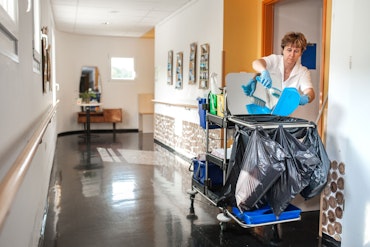Removing ageing cells could treat age-related diseases
Do you think there’s more to health than simply getting older?
![<p>When a cell in the human body becomes senescent, it is no longer able to divide any more. [Source: Shutterstock]</p>](https://agedcareguide-assets.imgix.net/news/articles/wp/ageingreverse__0610.jpg?fm=pjpg&format=auto&w=550&q=65)
When a cell in the human body becomes senescent, it is no longer able to divide any more. [Source: Shutterstock]
Key points:
- Scientists have found a way to selectively remove ageing cells in the human body
- As a person grows older, the number of ageing cells, known as senescent cells, also increases — with the ageing cells failing to die off or multiply, as healthy cells should
- Researchers have found that by selectively removing the senescent cells and keeping the healthy cells intact, the risk of ageing cells passing on age-related disease can be reduced
This week, new technology may have changed the way people age forever, as researchers have uncovered an innovative way to isolate ageing cells in the human body from healthy cells and remove them.
In the human body, ageing cells function like a mouldy apple in a fruit bowl, eventually spreading inflammation and damage to damage other cells.
As the number of ageing cells increases throughout a person’s life, this ageing process — known as cellular senescence — has been connected to a variety of age-related conditions, including:
- Cancer
- Diabetes
- Osteoporosis
- Cardiovascular disease
- Stroke
- Alzheimer’s disease and related dementias
- Osteoarthritis
- Declines in eyesight, mobility and thinking ability
Researchers from South Korea’s Department of Chemistry at the Ulsan National Institute of Science and Technology, led by Professor Ja Hyoung Ryu, in collaboration with Professor Hyewon Chung from Konkuk University, focused on developing a technology that could precisely target and eliminate ageing cells, while sparing normal healthy cells.
“The selective removal of ageing cells, by targeting the mitochondria and inducing dysfunction, has been successfully demonstrated in our experiments,” Professor Ryu said.
“This approach represents a new paradigm for treating age-related diseases.”
In recent years, the field of ‘cellular senescence’ science has flourished, since it was first discovered in the early 1960s. A wide range of research projects have sought to test forms of ‘senolytics’ — meaning the removal of ageing cells — on mice, jellyfish and 14 participants with idiopathic pulmonary fibrosis.
However, the latest research to come from UNIST has revolutionised this field of scientific study by offering several advantages, including minimal toxicity concerns and a wide therapeutic window.
Only two years prior, in 2021, Jim Kirkland, PhD, a clinical geriatrician at the Mayo Clinic and pioneer of senescence research expressed his caution about the safe use of senolytics treatments for use in preclinical and clinical trials. According to South Korean scientists, the very young science of cellular senescence may be able to break new ground now.
Recent studies on older mice treated with senolytics have shown a reduction in mortality rates for COVID-19 infection, which could provide valuable information on how treating cellular senescence and ageing cells may improve mortality rates in older individuals with COVID-19
Do you think there’s more to health than simply getting older? Let the team at Talking Aged Care know your thoughts on this ground-breaking discovery and subscribe to the Aged Care Guide newsletter for more.























